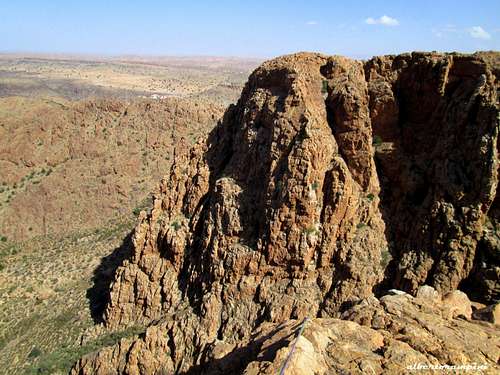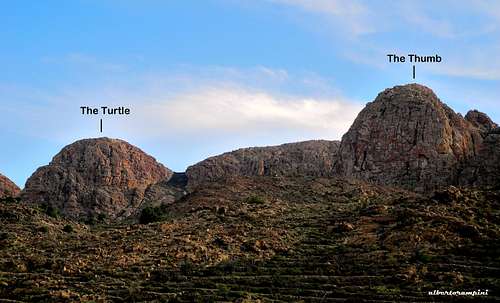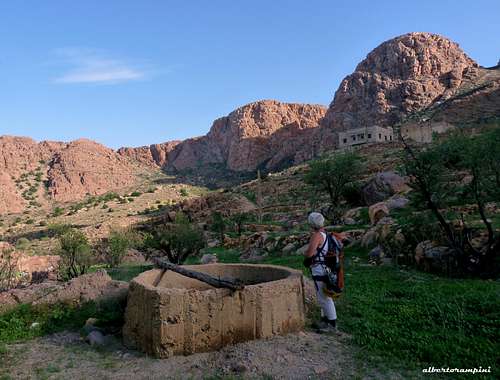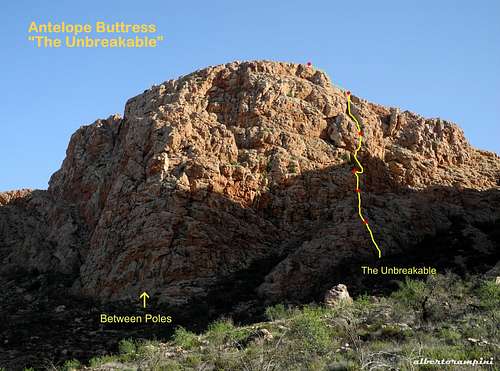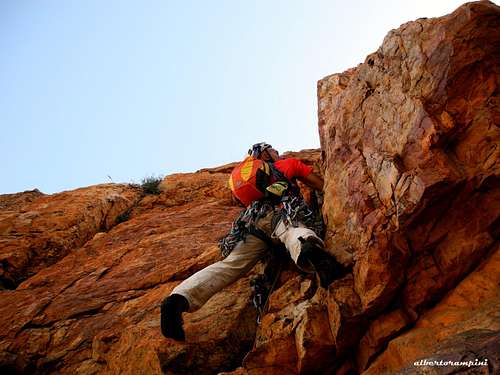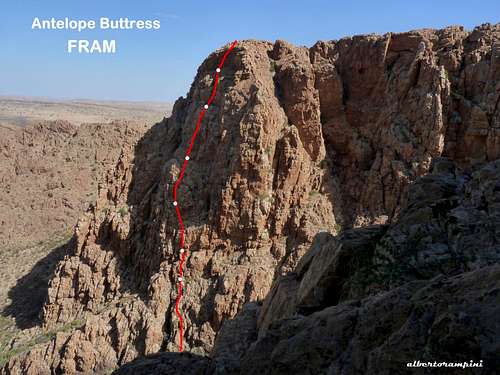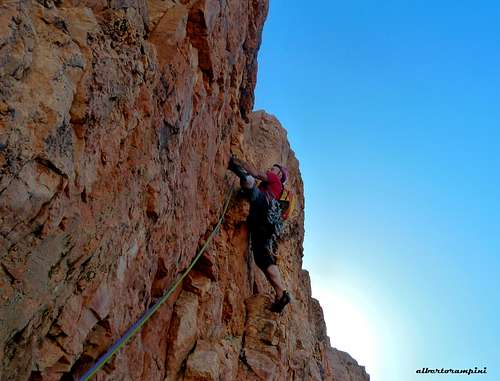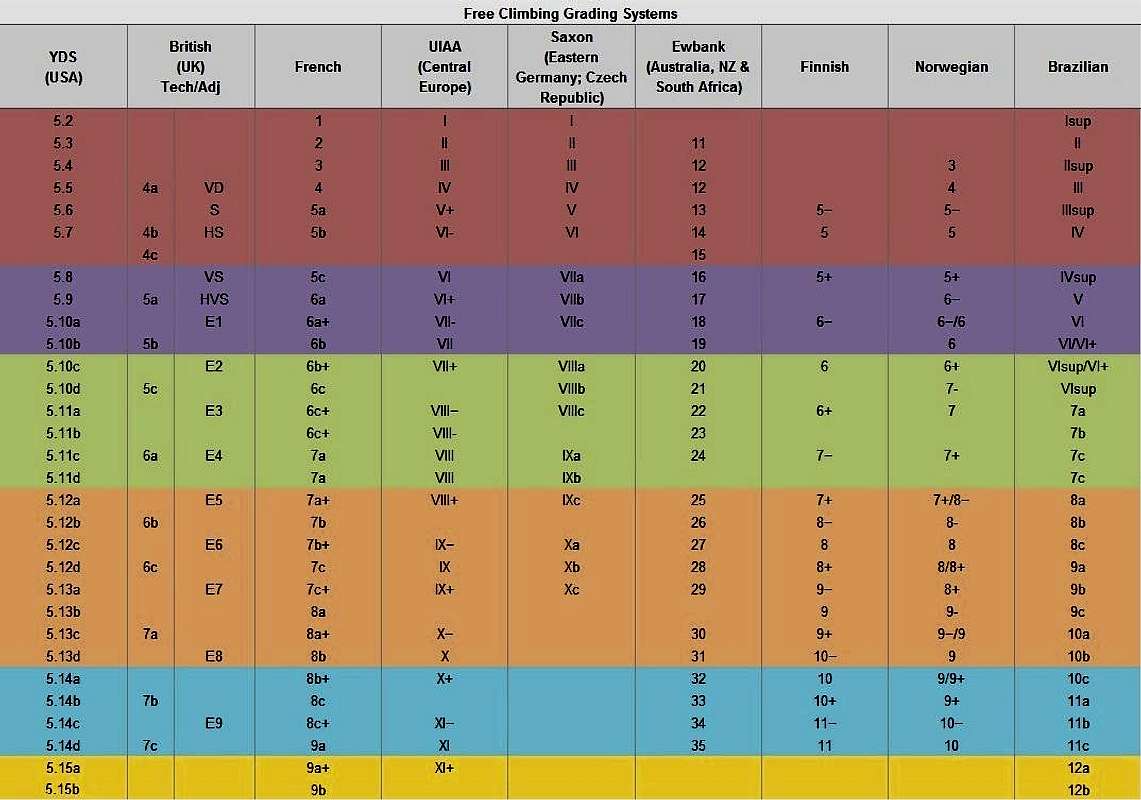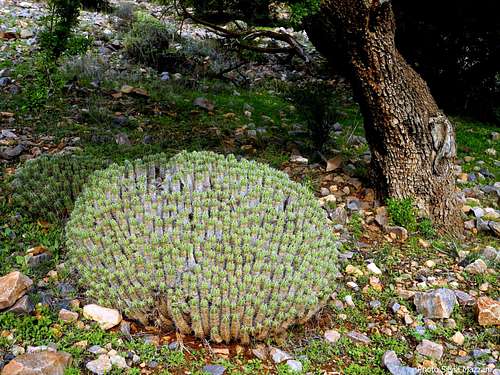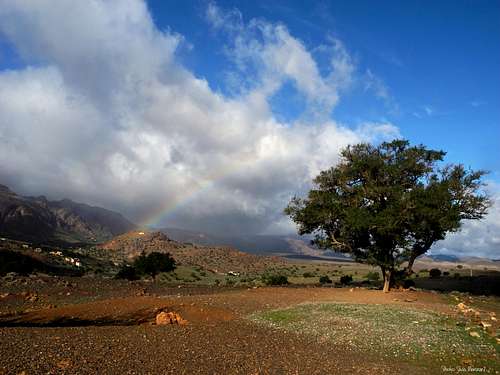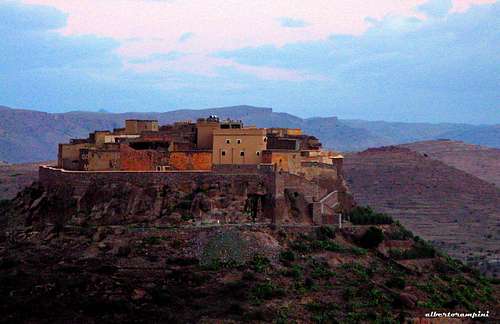-
 3602 Hits
3602 Hits
-
 84.82% Score
84.82% Score
-
 19 Votes
19 Votes
|
|
Mountain/Rock |
|---|---|
|
|
29.88449°N / 9.02896°W |
|
|
Anti-Atlas, Jebel El Kest |
|
|
Trad Climbing |
|
|
Spring, Fall, Winter |
|
|
4101 ft / 1250 m |
|
|
Overview
Antelope Buttress
When driving from the Kasbah Tizourgane to the village of Ida Ougnidif, on the Northern side of the Jebel El Kest Massif, before reach the village you will meet on the right a road entering a valley South/North oriented and located at the base of a long succession of crags: it's the Northern side of the Jebel Taskra Massif.
This broad escarpment, named Tizi N'Takoucht Escarpment, is located North-West to Ida Ougnidif and has plenty to offer to the climbers in reason of the high quality quartzite and the convenience of the approaches, mainly brief. In fact many crags are close enough to the road and some are really impressive, such as the superb Assldrar Thumb, an icon in the whole region. The Thumb is a full 300 m high dome with challenging big routes just in front of the tiny village of Assldrar, located on the Eastern end of the Tizi N'Takoucht Escarpment.
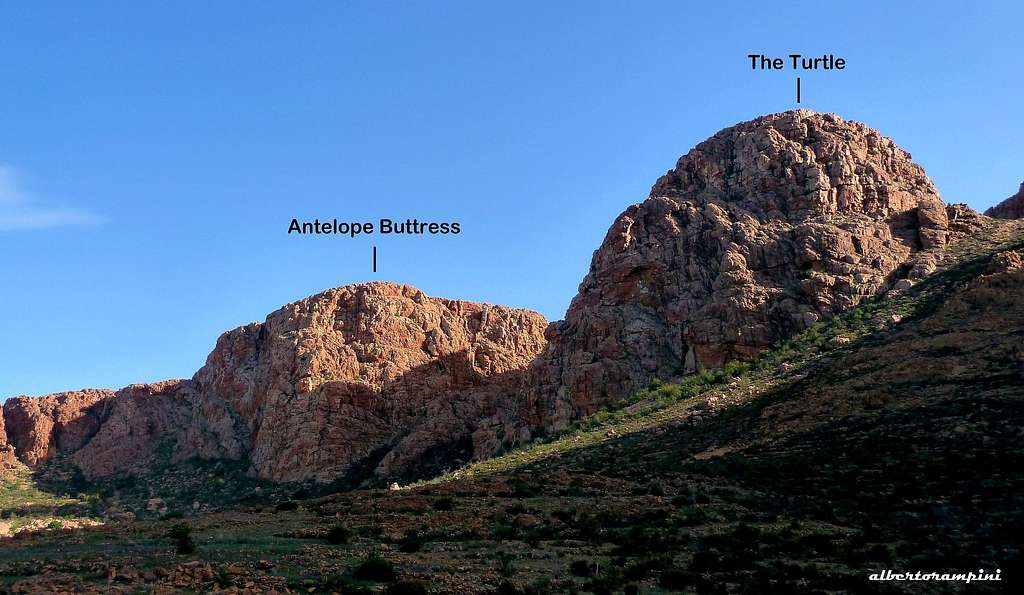
Starting from Assldrar it's possible to climb up some others impressive rock domes, as Antelope Buttress and The Turtle, both located on the left end of the rocky circus surrounding the village and offering some very interesting routes. A surprising encounter with an antelope scrambling down the summit of the mountain is the reason of the name "Antelope Buttress".
Getting There
The Jebel El Kest range can be conveniently approached both from Agadir and from Marrakech; several international flights run to Marrakech and Agadir airports. The best choice is hire a car (in the Airports there are many Car Hire Agencies).
- From Marrakech the road to Tafraoute involves a trip of 400 Kms and takes nowadays about 5 hours via the new Motor-way connecting Marrakech to Agadir, then following a busy road via Inezgane (near Agadir), Biougra and Ait Baha; alternatively you can follow the road via Asni, through the High Atlas range, a trip along a narrow mountain road inside a charming and scenic landscape, and Taroudant (it takes at least 7-8 hours).
- From Agadir the travel is shorter (you can drive to Tafraoute in 2 hours on a 170 kms good road), but the availability of flights is more restricted.
Access to the Antelope Buttress
The starting point to climb Antelope Buttress is the tiny village of Assldrar below the Tizi N'Takoucht Escarpment in the Northern side of Taskra North. The nearest village is Ida Ougnidif located on the Northern side of the Jebel El Kest area. A road (signpost) starts rightwards near Ida Ougnidif - between the Kasbah Tizourgane and Ida Ougnidif - and runs below the escarpments from East to West. Leave this road turning left once arrived at the village of Ayoufis and follow the road to Assldrar. Park the car with care near a T Junction.
Antelope Buttress West Face - "The Unbreakable"
Antelope Buttress, "The Unbreakable" - Difficulty expressed in the British scale
Summit altitude: m 1500
Difficulty: HVS, 5b (British alphanumerical scale)
Equipment: none, the conformation of quartzite allows conveniently to put down protections along the pitches and on the stops
Route length: 220 m
Exposure: NW First ascent: Alberto Rampini and Silvia Mazzani 2012, November 4th
Starting point: village of Assldrar
A fine climb on perfect rock. Solitary situation, but brief approach and descent.
Approach - From Assldrar descent to cross the river bed, then follow a very good path rising leftward in the direction of the leftmost crag of the rocky circus. The path reachs a vegetated gully between Antelope Buttress to the left and The Turtle to the right. Getting the base of the rocks traverse left and scramble up a secondary gully on the left of the main one to a flat terrace (cairn) below a big flake. This is the start of the next route, "Fråm". Continue rightwards 45 min from Assldrar. This route climbs in the middle the W face.
L1 – L2 Climb a spur, easy but with very good rock, getting to a rocky ledge below a crack. 70 m.
L3 – 20 m, 5a. Climb the excellent crack to a belay on a slab beneath an open corner.
L4 – 40 m, 5b. Ignore the corner and instead traverse right for 5 m to enter a Groove. Climb this and a sequence of corners to an overhang. Climb the overhang slanting right, then follow another corner to a cave. 5b, 40 m.
L5 – 42 m, 4c. Climb straight up above the cave, then follow a ramp and a long corner to a terrace on the summit ridge.
L6 – 50 m. Climb the easy ridge toward right to the summit cairn.
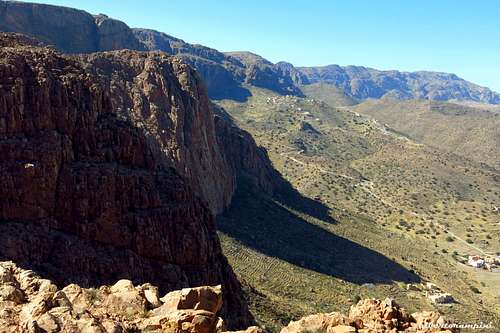
|
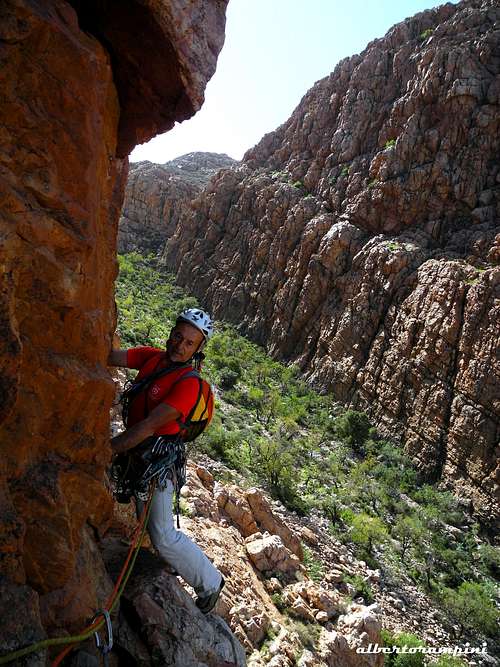
|
Descent: head towards S-E, then turn to right (West) to follow a vague path leading to a col. From here turn to right and follow a path descending to the starting point of the climb and then to Assldrar.
Antelope Buttress West Face - "Fråm"
Antelope Buttress – Fråm (British scale)
Summit altitude: m 1500
Difficulty: E1, 5b (British alphanumerical scale)
Equipment: none, the conformation of quartzite allows conveniently to put down protections along the pitches and on the stops
Route length: 170 m
Exposure: West
First ascent: Alberto Rampini and Silvia Mazzani 2013, November 10th
Starting point: village of Assldrar
The route Fråm follows a direct line on excellent rock, running between “Between Poles” to the left and “The Unbreakable” to the right.
L1 – 32 m, 5b. Climb directly an orange pillar with a tree on the top on the right of the big flake. Superb climb on a corner, then on a steep wall.
L2 – 28 m, 5a. Another corner, then an overhang to a stance on a flake (sling).
L3 – 40 m, 4b. Exit left on a corner, then cross a terrace and climb an orange and black wall.
L4 – 23 m, 4c. Climb directly the wall, then a little corner to the belay under a beautiful red wall.
L5 – 25 m, 5b. Up the superb wall, then climb an overhang. Belay under another steep red wall.
L6 – 20 m, 5b. Up the last superb wall over the belay to the Northern summit.
Descent: the same as for the previous route
Other routes
- Between Poles It's the left-most route of the wall
Essential gear
Double ropes, a complete set of friends and nuts, quickdraws and slings, helmet and usual belay devices
Rock climbing scales
Grades are expressed in the alpha-numerical British Scale, as usual in the the Jebel El Kest region. See below a helpful conversion diagram:
Red Tape
Climbing doesn’t suffer official and established restrictions, but however climbers are urged to respect the ethics of the pioneers, in order to preserve in the area the original adventurous trad climbing. In all the quartzite routes to date, no bolts and a few pitons have been fixed or used. In fact, the quarzite provides ideal cracks to place friends and nuts.
When to climb
The best seasons to climb are fall (from the end of october) and spring, till april, when the weather is mainly fine and the temperature is pleasant. Late in the spring and in summer the temperature rises up dramaticaly, and climbing is virtually impossibile. Winter (december to february) is traditionally the wet season and rain, cold and even snow, on the highest peaks, sometimes may be a problem. Nevertheless, you can find often pleasant temperature also in winter during the day, though the evening and the night can be quite chilly.
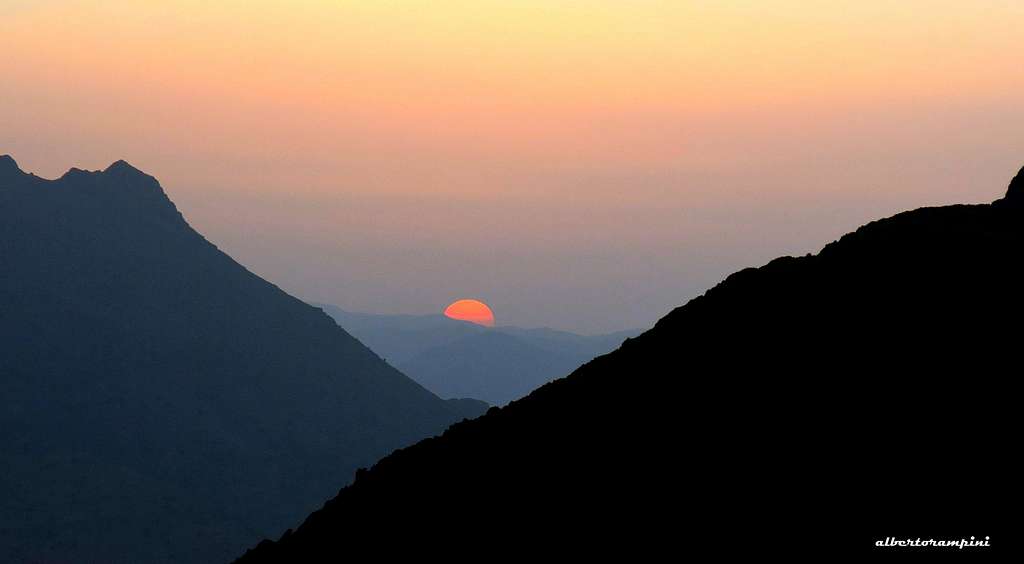
Where to stay
– The closest place to Tizi N'Takoucht Escarpment is the charming and traditional The Kasbah Tizourgane, nearby Ida Ougnidif.
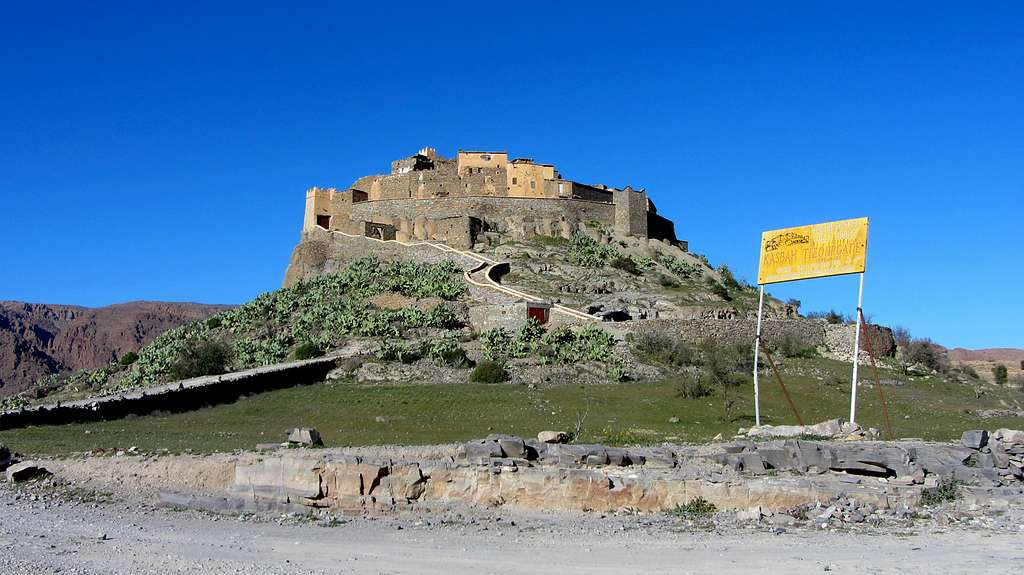
The Kasbah Tizourgane - ph. Bald Eagle |
Geology and rock
The most common rock is a pre-Cambrian quartzite, which quality is often perfect; its plenty of cracks allows a pleasant and sure climbing, with many opportunities of good natural protections.
Guidebooks and maps
North Side
"Tafraout - Rock Climbing in Morocco's Anti-Atlas" Vol II - The North Side of Jebel El Kest and Jebel Taskra by Steve Broadbent, Oxford Alpine Club 2013
“Morocco Rock – Jebel el Kest & Taskra North, 1000 Rock Climbs in the Anti-Atlas” by Emma Alsford and Paul Donnithorne, Crack Addicts 2012
“Moroccan Anti-Atlas North” by Steve Broadbent – Oxford Alpine Club 2010


